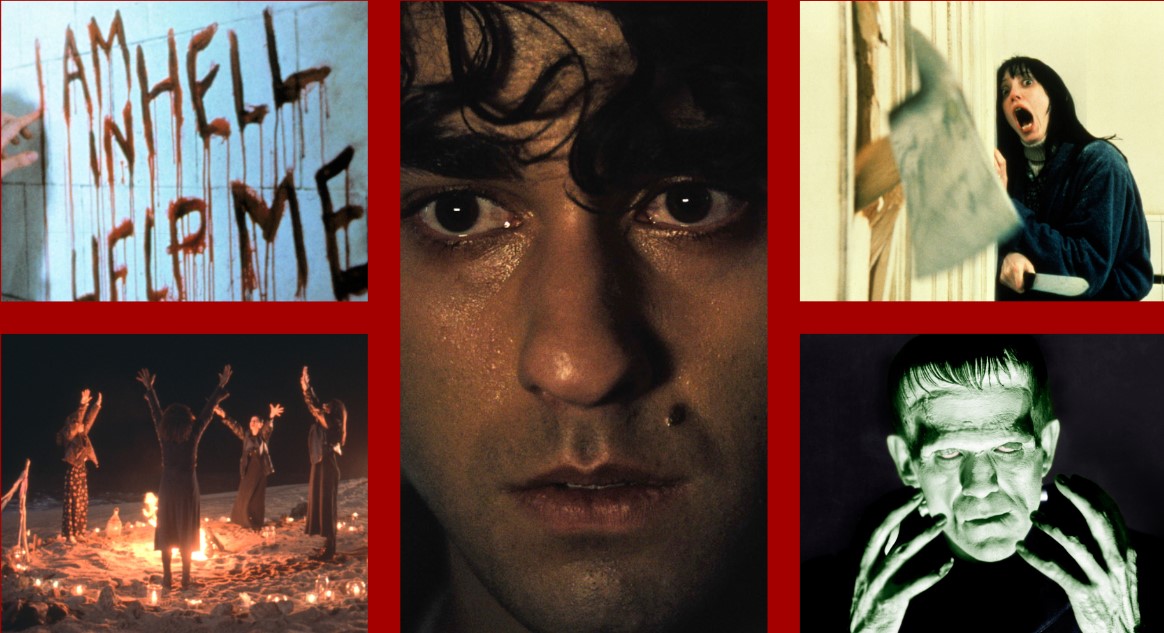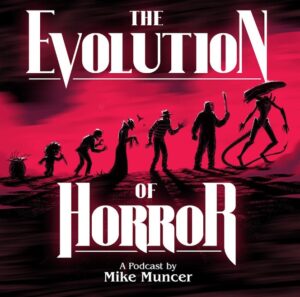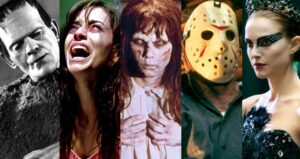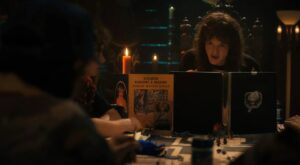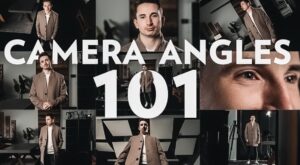samwyche.com– Into the Shadows A Deep Dive into the World of Horror Movies :In the dim recesses of our imagination, where fear and fascination entwine, lies a realm that has both terrified and thrilled us for generations—the realm of horror movies. “Into the Shadows: A Deep Dive into the World of Horror Movies” beckons you to unlock the crypt and unveil the secrets of a genre that has a pulse, a heartbeat, and a chilling story to tell. In this introduction, we maintain the tone of enticing readers into the world of horror movies, emphasizing the primal allure of fear intertwined with the magic of movies. The aim is to capture readers’ imagination and encourage them to embark on a thrilling exploration of horror.
The Evolution of 3 Horror Movies
horror movies has a rich and intricate history that has evolved over the decades, shaping itself to suit the fears, tastes, and technological advancements of each era. From the eerie silent films of the 1920s to the modern-day jump scares and psychological thrillers, the evolution of horror movies is a fascinating journey through time.
1. The Early Beginnings
The genesis of horror movies can be traced back to the late 19th century with the birth of film. Early pioneers like Georges Méliès explored the supernatural and the macabre in their short films. The 1920s saw the rise of German Expressionism with films like “The Cabinet of Dr. Caligari,” setting a stylistic tone for the genre.
2. The Golden Age of Horror 1930s-1950s
The Goldern Age of Horror 1930s-1950 marked the dawn of the Golden Age of Horror with the advent of Universal Pictures’ classic monster films. Iconic characters like Dracula, Frankenstein, and the Mummy became synonymous with horror. The 1940s continued this trend with the introduction of psychological horror, epitomized by Alfred Hitchcock’s masterpieces.
3. The Horror Renaissance 1960s-1970s
The 1960s and 1970s saw a resurgence in horror, fueled by changing societal norms and technological advancements. This period brought about a wave of groundbreaking films, including Alfred Hitchcock’s “Psycho,” Roman Polanski’s “Rosemary’s Baby,” and the revolutionary “Night of the Living Dead” by George A. Romero.
4. The Slasher Era 1980s-1990s
The 1980s and 1990s witnessed the rise of the slasher subgenre, characterized by masked killers and intense gore. Films like “Halloween,” “Friday the 13th,” and “A Nightmare on Elm Street” became cultural phenomena, solidifying the horror genre in mainstream cinema.
5. The Modern Era and Beyond
In the 21st century, horror movies has continued to evolve. Filmmakers experiment with psychological horror, supernatural themes, and social commentary. Films like “Get Out,” “The Babadook,” and “Hereditary” have pushed the boundaries of what horror can be, showcasing a new era of thought-provoking and socially relevant horror.
The evolution of horror cinema is a testament to its enduring appeal and its ability to adapt and reflect the fears and anxieties of society. As technology advances and societal dynamics change, we can only anticipate the genre’s exciting evolution in the future.
In this section, we cover the evolution of horror cinema, tracing its origins, key periods, and significant shifts in style, themes, and techniques that have shaped the genre into what it is today. We highlight its journey from the early silent films to the present-day thought-provoking horror narratives.
Diverse Subgenres of 3 Horror Movies
horror movies is a genre that thrives on diversity, constantly reinventing itself to terrify and captivate audiences in new ways. From psychological horrors that prey on the mind to supernatural tales that delve into the unknown, the breadth of subgenres within horror movies is staggering.
Psychological Horror
1. Defining Psychological Horror
Psychological horror focuses on the instability of the mind, often blurring the line between reality and delusion. It delves into deep-rooted fears, phobias, and psychological trauma to create a sense of unease.
2. Notable Psychological Horror Films
Black Swan (2010): A psychological thriller exploring the dark world of ballet and the protagonist’s mental unraveling. Shutter Island (2010): A mind-bending mystery that challenges perception and reality in a psychiatric facility.
Supernatural Horror
1. Exploring Supernatural Horror
Supernatural horror incorporates elements beyond the natural world, including ghosts, demons, and otherworldly entities. It capitalizes on fear of the unknown and our vulnerability to forces beyond our comprehension.
2. Iconic Supernatural Horror Films
The Exorcist (1973): A landmark film depicting a young girl’s possession by a malevolent entity and the ensuing battle for her soul. The Conjuring (2013): An introduction to the Warrens, real-life paranormal investigators, as they confront a malevolent presence.
Slasher Films
1. Defining Slasher Films
Slasher films are characterized by a sadistic killer systematically targeting victims. They often feature gore, suspense, and a final confrontation between the killer and a surviving victim.
2. Noteworthy Slasher Films
Halloween (1978): A seminal slasher film following Michael Myers as he escapes from a mental institution and returns to his hometown to terrorize. Scream (1996): A self-aware slasher film that satirizes the genre’s conventions while delivering scares.
In this section, we cover diverse subgenres of horror, providing definitions and notable examples. From psychological horror to horror-comedy, we offer a glimpse into the wide array of styles that make the horror genre captivating and multifaceted.
Behind the Scenes Crafting Fear on Screen
Creating fear on the screen is an art form that involves a careful orchestration of various cinematic elements. From cinematography to sound design, horror movies employ a range of techniques and tactics to immerse audiences in a terrifying experience.
Cinematic Techniques for horror movies
1. Lighting
Strategic use of lighting to create shadows and contrast, building suspense and highlighting frightening elements. Utilizing darkness to instill a sense of foreboding and to keep certain elements hidden, invoking fear of the unknown.
2. Camera Angles and Shots
Low-angle shots to portray characters as vulnerable or powerless. Close-ups to intensify emotions and reactions, making the audience feel the fear.
3. Sound Editing
Manipulating sound to evoke fear, using sudden loud noises or eerie sounds to startle or unsettle the audience. Effective use of silence to build tension and anticipation.
In this section, we explore the cinematic techniques and psychological tactics used by filmmakers to create fear in horror movies. From lighting and sound to pacing and foreshadowing, we shed light on the intricate artistry behind the scenes that evokes terror and keeps audiences on the edge of their seats.
Conclusion
The world of horror movies is a labyrinth of fear, suspense, and creativity—a realm where nightmares come to life and the shadows hold both terror and allure. Throughout this journey, we’ve peeled back the layers of this genre, examining its evolution, diverse subgenres, and the artistry involved in scaring audiences.
In this conclusion, we summarize the exploration of horror cinema, emphasizing the artistry of fear, its enduring allure, and the invitation for readers to further delve into this captivating genre. We highlight the immersive and thought-provoking nature of horror, inviting readers to embrace the eerie and intriguing world of horror movies.
